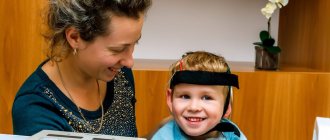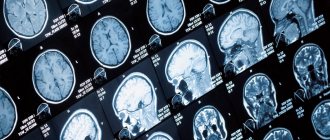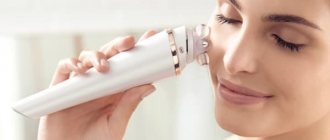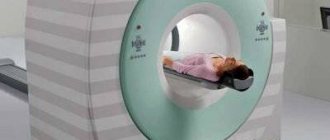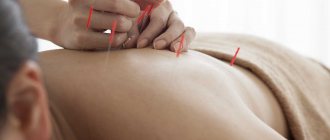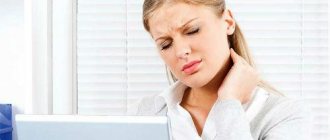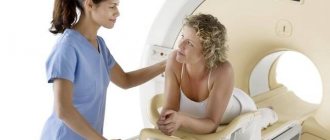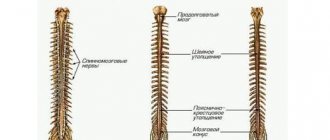What is BAK?
Bioacoustic correction (BAC) is an innovative method of influencing brain structures using a special computer program that can convert brain signals obtained from a person’s electroencephalogram into sound.
During the session, the patient literally listens to the “programmed music” of his brain. But the most important thing is that with the reverse effect of sound on the neurons of the brain, involuntary self-regulation of the body occurs, which can be observed in real time using an electroencephalogram. Bioacoustic brain correction combines the latest technologies of neurotherapy and biofeedback. Bioacoustic correction, being an effective, non-invasive and non-drug method of rehabilitation of patients used at the CORTEX medical center. It is aimed at restoring the functional state of the central nervous system and mobilizing the body’s natural reserves, helps to increase the effectiveness of medical rehabilitation in complex therapy with biophysical activation of neuromotor structures, and can be used independently for a number of diseases.
Is this method effective?
The effectiveness of the method has been confirmed:
- 25 years of scientific research at the Federal State Budgetary Institution “Research Institute of Experimental Medicine”, Northwestern Branch of the Russian Academy of Medical Sciences (FGBU “NIIEM” NW RAMS), Northwestern State Medical University named after. I.I. Mechnikov, State Institute for Advanced Training of Doctors of the Ministry of Defense of the Russian Federation, St. Petersburg State Pediatric Academy, Russian Scientific Center for Medical Rehabilitation and Balneology of the Ministry of Health of the Russian Federation;
- Clinical trials and medical practice at: State Research Institute of Emergency Medicine named after. N.V. Sklifosovsky, No. 2 FBU “3 TsVKG im. A.A. Vishnevsky Ministry of Defense of Russia", MAPO (St. Petersburg), State Autonomous Institution of the Republic of Tatarstan Emergency Hospital (Regional Vascular Center) Tatarstan and in a number of other leading clinics in Moscow and St. Petersburg;
- The research results are presented in scientific articles and defended in dissertations.
Sounds and the nervous system
The central nervous system is formed by the brain and spinal cord. This is the main regulatory department of the body, responsible for conscious activity, perception of the external environment, heartbeat, breathing and other vital functions. The organs of the nervous system consist of neurons, their processes and auxiliary structures. The functions of a complex neural network are provided by constant electrical impulses that move from one cell to another in a fraction of a second. Impulses change the internal state of neurons and determine the execution of a certain function, be it sound processing or thought formation.
It is important to note that the brain is also a central sensory organ. All information from the external environment comes here, including sounds, visual information, tactile sensations and smells. The fact is that in different parts of the body there are receptors, which are the endings of neuron processes. Sound, physical or any other impact creates an impulse in the process. Information quickly moves through different parts of the sensory organ and reaches the brain, where final processing of the data occurs. This is exactly how the connection between the external environment and the nervous system works.
The human hearing organ is formed by the outer, middle and inner sections. There are mechanisms in different parts of the ear that enhance the impact of sound. These are the auricle, eardrum and auditory ossicles. Sound vibrations gradually reach the internal part of the organ and stimulate the formation of an electrical impulse. The signal enters the temporal cortex of the cerebral hemispheres. At the same time, activation of neurons when exposed to sound can occur in different parts of the cortex.
In what areas of medicine is BAC used?
- Regenerative medicine and rehabilitation
- Neurology
- Psychiatry
- Narcology
- Cardiology
- Professional activities (including personnel of special risk units)
- Special (correctional) pedagogy (including oligophrenopedagogy and speech therapy)
- Sport
What is the essence of the method?
The LHC method is based on the concept of involuntary self-regulation. The content of this concept is not the compensation of impaired physiological functions, but the activation of natural regulatory processes that are normally carried out involuntarily, but were suppressed as a result of an unfavorable combination of environmental factors, illness or individual personal characteristics. Activation of self-regulation processes is carried out by acoustic stimulation consistent with the current bioelectrical activity of the brain. The presentation of music-like sounds, the parameters of which are consistent with the indicators of the rhythmic structure of the EEG and synchronous with the events of bioelectrical activity of the brain, creates unique conditions for adaptive stimulation. This type of sensory stimulation, which combines elements of biofeedback, audiovisual influence and music therapy, allows you to activate natural self-regulation processes, which contributes to the effective restoration of the functional state of the central nervous system.
The LHC method activates the structures of the mesolimbic system when listening to music by synchronizing the acoustic impact with the endogenous activity of the brain.
Mechanism of influence: stimulation of brain structures responsible for the processes of motivation and reinforcement - the limbic system (primarily the hypothalamic nuclei, amygdolar-hippocampal complex, etc.)
Symptoms of alalia in children
There are two forms of alalia: sensory (impressive) and motor (expressive).
Sensory alalia
Sensory alalia (underdevelopment of speech understanding) is a defect in the perception and understanding of speech. Sensory alalia occurs when the speech-auditory part of the cerebral cortex is damaged, in which disturbances in the analysis and synthesis of speech sounds occur, causing the ability to understand the speech of others to be lost.
Due to the child’s lack of response to questions asked, sensory alalia is often confused with deafness or mental retardation. The child maintains contact with the environment through facial expressions and gestures. With this type of alalia in children, the method of communication is often a drawing, which can be accompanied by a terse verbal comment. A child with sensory alalia pronounces sounds correctly, however, distorts whole words and uses only short sentences or their equivalents.
Severe forms of sensory alalia are characterized by a lack of understanding of speech, and can also lead to secondary disorders of personality and behavior, and delayed intellectual development.
Motor alalia
Motor alalia (underdevelopment of active speech) is characterized by a fairly good understanding of speech by the child. However, difficulties arise when perceiving long and complex sentences . Symptoms of motor alalia are speech-motor disturbances of a high degree, which may also be accompanied by general physical motor disability (poor development of motor skills, poor coordination of movements, difficulties associated with fine motor skills, problems with self-care).
There are afferent and efferent motor alalia. With afferent, sound pronunciation is disrupted during potentially possible articulatory movements. Efferent alalia is accompanied by the inability to perform a number of articulatory movements, which leads to a violation of the form of sounds.
The speech of such children is characterized by a small vocabulary; sentences are short one- or two-part phrases. Children cannot consistently describe events and determine cause-and-effect relationships.
The mental development of children with motor alalia is characterized by impaired memory (in particular, auditory-verbal) and attention. Hyperactivity or, conversely, lethargy is possible, combined with decreased performance and increased fatigue.
As a rule, the most common mixed type is sensorimotor alalia, which indicates a close functional connection between the speech-auditory and speech-motor areas of the cerebral cortex.
What are the advantages of the LHC method?
- non-drug, non-invasive treatment of functional disorders of the central nervous system;
- no addiction, side effects and age restrictions;
- high efficiency proven by many years of use;
- compatibility and acceleration of other types of treatment (biophysical activation of neuromotor structures)
- reduction of drug load, for some nosologies the possibility of replacing drug treatment.
- Each LHC procedure is carried out under the control of EEG recording via 4 channels in on-line mode (review and indexometric analysis).
- after each procedure, it is possible to evaluate changes in various EEG parameters (indexometric, pattern, cross-correlation analyses).
How does LHC differ from classical biofeedback (BFB) methods?
- Possibility of use without age restrictions
- possibility of use in case of deficits in the cognitive and emotional-volitional spheres of mental activity
- complete and accurate display of EEG parameters in a sound image: - time-frequency - amplitude - spatial
- work in real time
- constant hardware conversion delay 20-30 ms
What is the essence of the therapeutic effect of exposure?
- restoration of the functional state of the central nervous system - normalization of electroencephalogram parameters
- normalization of psychophysiological and psychological indicators (improvement of psycho-emotional state, improved mood, increased activity, decreased emotional tension and fatigue, normalized sleep and appetite, decreased fixation on one’s condition, decreased indicators of neuroticism, depression, etc.);
- hemodynamic (central and autonomic regulation of the cardiorespiratory system, improvement of vascular reactivity, normalization of blood pressure, etc.);
- immunomodulatory;
- analgesic (tension headaches, functional headaches and anginal pains during angina pectoris and myocardial infarction, other types of pain); • metabolic-trophic;
- stimulating and restorative (stimulation of mental and speech development in children with delays in speech and psycho-speech development, effective restoration of speech and cognitive functions after organic brain damage, etc.)
What are the indications of the BAC method in pediatric neurology?
- Mental development disorders (mental retardation, mental retardation, autistic syndrome).
- Speech development disorders (dysarthria, dyslalia, OHP, alalia, dysgraphia, dyslexia).
- Attention deficit hyperactivity disorder.
- Neurosis-like disorders (tics, enuresis).
- Tension headaches. Migraine.
- Consequences of cerebrovascular accident, organic brain damage, traumatic brain injury.
- Hypoxemic-ischemic lesions of the central nervous system of perinatal origin
- Adaptation to school and preschool institutions.
- General health improvement of the body and psychoprophylaxis: increasing and maintaining the optimal level of adaptive capabilities of the body, the process of self-regulation.
For whom?
Has no age restrictions.
- Psycho-emotional disorders of any etiology.
- Attention deficit hyperactivity disorder.
- Delayed psycho-speech development, uneven development of higher cortical functions.
- Receptive, expressive speech disorder (alalia, stuttering, dysarthria).
- Autism spectrum disorders.
- Neurosis, neurosis-like diseases, enuresis.
- Hyperkinesis, obsessive movement syndrome.
- Sleep disorders.
- Consequences of TBI, recovery period.
- Cerebro-asthenic syndrome.
- Perinatal encephalopathy.
- Neurocirculatory dystonia, diencephalic disorders.
- Adaptation disorders in preschool and school groups.
What are the indications for the LHC method in adult neurology?
- Relieving “chronic fatigue” syndrome. Eliminating the effects of stress. Post-traumatic stress. "Loss Syndrome"
- Treatment of neurotic, neurological disorders. Treatment of mental disorders (anxiety syndrome, phobic syndrome (panic attacks), astheno-depressive syndrome). Treatment of emotional disorders: anxiety, restlessness, increased irritability, fatigue, decreased performance, internal tension, decreased mood. Treatment of sleep and appetite disorders.
- Vegetative-vascular disorders (both diencephalic in nature and parasympathetic crises).
- Consequences of stroke, organic brain damage, traumatic brain injury: restoration of cognitive functions and speech disorders, normalization of psychophysiological status.
What contraindications should you keep in mind?
- acute postoperative period;
- hypertensive crisis;
- acute infectious diseases;
- acute disorders of cerebral and spinal circulation;
- myocardial infarction in the acute period;
- acute and subacute inflammatory diseases of the brain and spinal cord, its membranes (myelitis, meningitis, etc.);
- acute bleeding.
Treatment results
In children
The overall effect for various diseases is a confirmed improvement in EEG parameters, normalization of the psycho-emotional state and improved sleep.
ADHD of various etiologies
In 85% of cases there is a 2-2.5-fold decrease in the number of clinical signs of ADHD and symptom severity indicators. Without drug treatment.
Transient tics
In 85% of cases - complete disappearance of symptoms (in severe cases, a significant decrease in the number of tics), in 15% - a decrease in hyperkinetic movements (can intensify during stressful situations). Without drug treatment.
Enuresis (associated with MMD)
In 80% of cases, there is complete disappearance of symptoms (in severe cases, a significant decrease in the number of urinations per night or the number of times per week). Without drug treatment.
Psychopathy and emotional disorders in adolescence
In 70% of cases there is a decrease in reactive anxiety, improvement in SAN indicators, and behavioral correction. Without drug treatment.
ZPR of cerebral-organic origin
Leveling the emotional background, stimulating private mental functions, accelerating or, in severe cases, launching speech development, increasing learning ability. Acceleration by 2.5 times or more of classical treatment methods (drug treatment and developmental exercises).
In adults
The overall effect in various diseases is a confirmed improvement in EEG parameters, well-being, activity, mood and other clinical indicators, a decrease in reactive and personal anxiety.
Neurosis with asthenic syndrome
Improvements in 80% of cases, according to specialists from the Neurosis Clinic of St. Petersburg. It is carried out in complex therapy, and in mild forms - independently.
Neurosis with depressive syndrome
Improvements in 70% of cases, according to specialists from the Neurosis Clinic of St. Petersburg. It is carried out in complex therapy, and in mild forms - independently.
Autonomic disorders, psychosomatic disorders (neurodermatitis, etc.)
Improvements in 85% of cases. It is carried out in complex therapy, and in mild forms - independently.
Neurosis with phobic syndrome, obsessive states, panic attacks
Improvements in 80% of cases. It is carried out in complex therapy, and in mild forms - independently.
How is the procedure performed?
Headphones are put on the child, and sensors are attached to his head that read EEG parameters. After this, he begins to hear acoustic waves, which are essentially converted electrical signals from the brain. Each LHC procedure is carried out under the control of EEG recording via 4 channels online (review and indexometric analysis). After the procedure, the specialist has the opportunity to evaluate changes in various EEG parameters.
The duration of the procedure is 15-25 minutes, while the procedure is comfortable and the patient does not experience any painful sensations.
A positive effect is often noted already during the procedures or within 1-1.5 months.
Recommended course: from 7 to 15 sessions of 15-25 minutes. It is advisable to repeat this treatment after 2-3 months.
Hearing correction methods
You need to understand that when we talk about correction methods, we are not talking about miraculous healing or miracle drugs. We are talking about the use of individual technical means of rehabilitation for people with hearing impairments - hearing aids and cochlear implants. At the mere mention of these devices, many hearing-impaired people refuse correction, categorically not wanting to wear something like that directly on their ear.
Before you decide not to return to the world of sound, we recommend that you read the stories of people who decided to use hearing aids and adapted perfectly. Audionics hearing specialists invited them to participate in the People Hearing project to introduce our readers in more detail to the real life experiences of hearing-impaired people.
So, depending on the hearing problem, there are two types of hearing correction: electroacoustic hearing aid and cochlear implantation.
Electroacoustic hearing aids involve the user constantly (except for sleep and water procedures) wearing a digital hearing aid. The following specialists can identify such a need: ENT, audiologist, audiologist, audiologist.
Features of electroacoustic hearing aid
- Hearing replacement can only be performed after a detailed diagnosis - pure tone threshold audiometry.
- The hearing aid is selected and adjusted by a specialist taking into account the individual characteristics of your hearing.
- If a person’s hearing has been impaired for a long time (more than a year), then after selecting and adjusting a hearing aid, he will have to get used to what he hears again. Adaptation takes from three weeks to two months.
- Hearing aids, like any computers, vary not only in power, but also in cost.
- Sound amplifiers and hearing aids are completely different devices. A sound amplifier can only make all surrounding sounds louder at once. A digital hearing aid amplifies and transmits to the user only those sounds that the user cannot hear.
- If your hearing is reduced in both ears, then you need binaural hearing aids.
